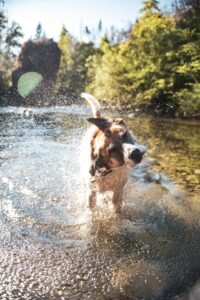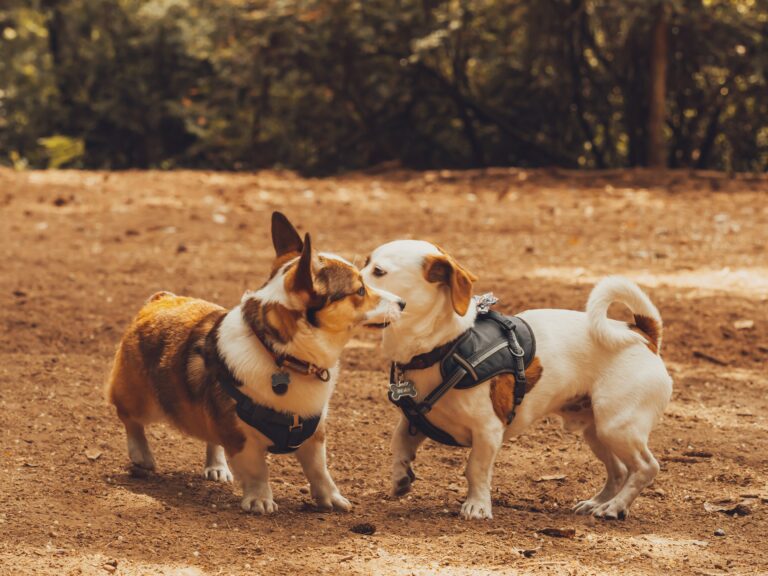Essential Tips for Keeping Your Dog Safe in Hot Weather
Essential Tips for Keeping Your Dog Safe in Hot Weather
A comprehensive guide for essential tips for keeping your dog safe in hot weather. Here are some heat safety tips for dogs, including understanding the dangers of heatstroke, recognizing signs, keeping dogs cool in hot weather, providing shade and water, and avoiding hazards.
Understanding the Dangers of Heat for Dogs
Heatstroke is a life-threatening emergency for dogs caused by prolonged exposure to hot or humid environments. This occurs when a dog’s body temperature rises to dangerous levels, leading to multiple organ failure and, if not promptly addressed, can be fatal. For example, breeds with short muzzles like pugs, bulldogs, and boxers are at higher risk due to their inability to effectively regulate body temperature. Additionally, older dogs, overweight dogs, and those with pre-existing health conditions such as heart or respiratory problems are also more vulnerable to heatstroke.
Recognizing the signs of heatstroke, such as heavy panting, seeking shade, and reluctance to play, is crucial for dog owners. For instance, heavy panting is the initial indicator that a dog is struggling to cool down, and if not addressed, can progress to symptoms like drooling, rapid heartbeat, and even collapse. Understanding these symptoms can prompt dog owners to take immediate action, such as moving the dog to a cooler area, applying cool (not cold) water to their skin, and seeking veterinary assistance. By being aware of the risks and symptoms of heatstroke, owners can take proactive measures to protect their pets and ensure their safety during hot weather.
 Recognizing Signs of Heatstroke in Dogs
Recognizing Signs of Heatstroke in Dogs
Recognizing the signs of heatstroke in dogs is crucial for their well-being. In addition to heavy panting, seeking shade, and reluctance to play, other signs of heatstroke may include drooling, rapid heartbeat, vomiting, and dark red gums or tongue. Promptly addressing these symptoms is essential to preventing the progression of heatstroke, which can be life-threatening for dogs.
For example, if you notice your dog exhibiting signs of heatstroke, such as heavy panting and seeking shade, it’s important to take immediate action. Move your dog to a cooler area, preferably indoors with air conditioning, and offer small sips of water if they are alert and able to drink. Additionally, using cool, not cold, water to wet their fur and applying wet towels to their body can help bring their body temperature down. It’s crucial to seek veterinary care as soon as possible, even if your dog appears to recover, as internal damage from heatstroke may not be immediately apparent.
Preventing heatstroke is equally important. This can be achieved by being mindful of the temperature and humidity when engaging in outdoor activities with your dog. Limiting exercise to cooler times of the day, such as early morning or late evening, and providing access to shaded areas during outdoor outings are effective preventive measures. Always ensure that your dog has access to fresh water and take regular breaks in the shade to prevent overheating. Furthermore, it’s vital to be cautious when walking your dog on hot asphalt, as it can cause burns to their paw pads. By being proactive and attentive to your dog’s behavior and well-being, you can significantly reduce the risk of heatstroke during hot weather.
 Keeping Dogs Cool in Hot Weather
Keeping Dogs Cool in Hot Weather
During the hot summer months, it’s essential to take proactive steps to ensure the well-being of our furry friends. To keep dogs cool and safe, it’s important to limit their exercise on scorching hot days. Instead, opt for walks during the cooler parts of the day to prevent their paws from burning on hot pavement.
In addition to this, providing shade and cool water for pets when they are outdoors is crucial. Dogs should have access to a shaded area where they can rest comfortably without being exposed to direct sunlight. Moreover, ensuring that pets have a constant supply of fresh, cool water helps prevent dehydration and overheating, especially during hot and humid weather.
Furthermore, it’s imperative to be mindful of hot asphalt, as it can quickly become too hot for a dog’s paws, leading to discomfort and potential burns. Avoiding prolonged exposure to such surfaces is vital for the safety and comfort of our canine companions. Additionally, keeping dogs away from harmful substances like rodenticides and lawn insecticides is crucial to prevent accidental poisoning or other health issues. By being mindful of these factors, pet owners can help their dogs stay cool and safe during the sweltering summer months.
Providing Shade and Water for Dogs
When the temperature rises, it’s crucial to ensure that our furry friends have access to plenty of fresh, clean water and a shady place to rest, especially in hot or humid weather. Dogs can easily become overheated, leading to dehydration and potentially life-threatening heatstroke if they are not provided with the necessary resources to keep cool.
For instance, one way to provide shade for dogs is by setting up a portable canopy or ensuring that there are shaded areas in the yard where they can retreat from the sun. This allows them to take a break from the heat, reducing the risk of overheating and heat-related illnesses. Additionally, it’s vital to recognize the symptoms of overheating in pets, such as excessive panting, drooling, and weakness, and to be particularly cautious with flat-faced, elderly, overweight, or ill pets who may be more vulnerable to heat-related issues. By understanding these warning signs and taking proactive measures, we can help ensure the well-being of our beloved pets during hot weather.
Furthermore, apart from providing shade and water, regular veterinary checkups, vaccinations, and spaying/neutering also play a crucial role in keeping pets safe and healthy during the summer months. These preventive measures not only contribute to their overall well-being but also aid in identifying any potential health concerns early on, allowing for timely intervention and treatment. Therefore, ensuring that pets have access to shade, water, and proper veterinary care is essential for their safety and comfort in hot weather.
Avoiding Hot Pavement and Other Hazards
When taking your dog for a walk during hot weather, it’s crucial to be mindful of the pavement temperature. Hot asphalt can cause painful burns on your dog’s paws, leading to discomfort and potential injuries. To prevent this, it’s advisable to limit walks to cooler times of the day, such as early morning or late evening when the pavement is less likely to be scorching hot. A good way to check if the pavement is too hot for your dog is by placing the back of your hand on the surface for 5 seconds. If it’s too hot for your hand, it’s too hot for your dog’s paws.
In addition to hot pavement, it’s important to protect your dog from other hazards commonly found in outdoor environments. For instance, being cautious around pools and at barbecues is essential to prevent accidents. Dogs, especially those who are not strong swimmers, should be closely supervised around pools to avoid the risk of drowning. Moreover, it’s vital to keep unscreened windows and doors closed to prevent pets from escaping or encountering potential dangers outside. By taking these precautions, you can ensure a safe and enjoyable outdoor experience for your furry friend, reducing the risk of accidents and injuries.
Remember that dogs can be curious and may inadvertently come into contact with harmful substances. It’s essential to keep them away from items such as rodenticides and lawn insecticides, which can be toxic if ingested. This can be achieved by keeping your dog on a leash and maintaining a close watch on their activities during outdoor excursions. Furthermore, being aware of common household items that are toxic to dogs, such as alcoholic beverages, raisins, grapes, onions, chocolate, and xylitol, is crucial for preventing accidental ingestion and safeguarding your pet’s well-being. By being proactive and vigilant, you can protect your dog from potential hazards and ensure a safe environment for their summer activities.
Conclusion and Call to Action
In conclusion, recognizing the signs of heatstroke in dogs is crucial for their well-being during the hot summer months. Heavy panting, seeking shade, and reluctance to play are all indicators that a dog may be suffering from heatstroke, and it’s vital for dog owners to promptly address these symptoms to prevent a life-threatening emergency. For example, if a dog is excessively panting and struggling to find relief in the shade, it’s important to provide cool water, limit their activity to cooler times of the day, and avoid hot pavements to prevent heatstroke.
Additionally, responsible dog ownership involves spreading awareness about the risks of leaving pets in hot cars. This can be achieved through community outreach, social media campaigns, and educational materials distributed at local pet stores and veterinarian offices. Encouraging pet owners to never leave their dogs in parked vehicles, even with the windows cracked, is a critical message that can help prevent tragic incidents during the summer. By taking these proactive measures and advocating for the well-being of pets in hot weather, we can create a safer environment for dogs and ensure that they can enjoy the summer months comfortably and safely. You can also reach out to http://30adogtrainers.com for more essential tips for keeping your dog safe in hot weather.



 Recognizing Signs of Heatstroke in Dogs
Recognizing Signs of Heatstroke in Dogs Keeping Dogs Cool in Hot Weather
Keeping Dogs Cool in Hot Weather





